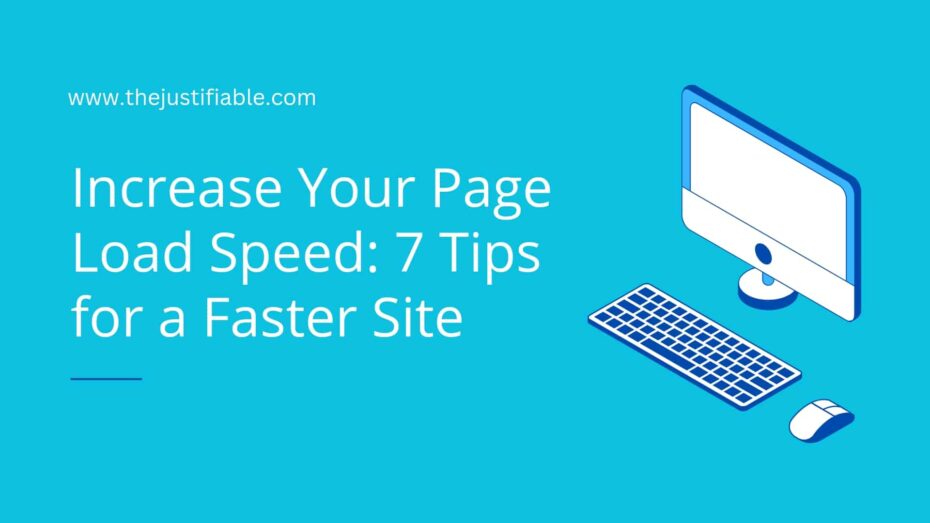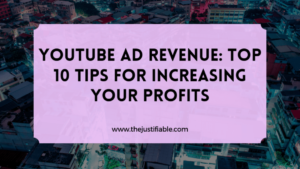Table of Contents
Have you ever wondered how to start a blogging business and turn your passion into a profitable career? Whether you’re a seasoned writer or just getting started, this guide will walk you through the exact steps to create, grow, and monetize your blog successfully.
Let’s dive into the 7 simple steps to help you build a thriving blogging business.
Step 1: Define Your Blogging Niche And Target Audience
Defining your blogging niche and understanding your target audience are crucial first steps when learning how to start a blogging business. These elements shape your blog’s focus, attract the right readers, and position you as an authority in your field.
What Is a Blogging Niche and Why Is It Important?
A blogging niche is the specific topic or subject area your blog focuses on. Choosing a niche helps narrow your content scope, making it easier to build expertise and connect with readers who share your interests.
A focused niche sets your blog apart in a crowded space. For example, writing about “eco-friendly parenting tips” will resonate better with a defined audience than covering general parenting topics. Readers appreciate specialized insights, and it builds trust.
Your niche also determines your blog’s direction. It shapes the tone of your content, the kind of topics you explore, and even the visuals you use. I suggest brainstorming topics that excite you and align with your expertise.
Choosing a niche doesn’t mean limiting yourself. Instead, it provides clarity, helping you create targeted and high-value content. This focus is key to attracting consistent readers and ensuring long-term blogging success.
Lastly, having a niche boosts monetization opportunities. Advertisers, sponsors, and collaborators are drawn to bloggers with a defined audience and subject area, as it ensures more targeted promotions.
How to Identify Your Target Audience for Blogging Success
Understanding your target audience involves knowing who your ideal readers are and what they need from your blog. This connection helps create content that solves problems, answers questions, and keeps readers coming back for more.
Start by considering demographics. Who would benefit most from your blog? For instance, if your niche is fitness, are you targeting beginners, busy moms, or advanced athletes? These details guide your content strategy.
Next, explore their challenges and preferences. I recommend conducting surveys, joining forums, or analyzing competitors to see what topics resonate. This research provides insights into your audience’s pain points and expectations.
Craft your content tone to match your audience. If you’re writing for young professionals, keep it professional yet relatable. For a family-oriented audience, a warm and conversational tone works wonders.
Engage directly with your audience through social media or blog comments. These interactions not only build community but also provide ideas for new content tailored to their needs.
Tips for Choosing a Profitable Blogging Niche
Picking a profitable niche requires balancing passion with demand. A niche you love keeps you motivated, while market demand ensures there’s a potential audience and income opportunities.
Start by listing topics you’re passionate about. Ask yourself: Can I write extensively about this subject? Passion sustains consistency, which is vital for blogging success.
Then, assess demand. Use tools like Google Trends or keyword research platforms to see if there’s enough interest in your niche. High search volume signals a larger audience base.
Look at the competition. A saturated niche might feel intimidating, but it also proves there’s interest. Focus on finding unique angles within the niche to stand out.
Consider monetization possibilities. Can your niche attract advertisers or affiliates? For example, niches like tech gadgets or beauty products often have lucrative affiliate programs.
Lastly, experiment. Sometimes, the best way to identify a niche is to start blogging and see what topics resonate most with your audience. Adjust your focus based on feedback and analytics.
Step 2: Create A Winning Blogging Business Plan

A blogging business plan acts as a roadmap, guiding you through each stage of growth. It ensures you stay organized, set achievable goals, and focus on strategies that build a sustainable and profitable blogging business.
Essential Elements of a Blogging Business Plan
A well-crafted business plan includes your niche, target audience, content strategy, and revenue model. Think of it as a blueprint for building and scaling your blog effectively.
Define your blog’s mission. Why does your blog exist, and what value does it provide? For instance, a mission statement like “Helping busy parents create healthy meals” establishes your purpose and direction.
Outline your content strategy. Decide how often you’ll post, the types of posts you’ll create, and any themes you’ll follow. This clarity makes your workflow smoother and more efficient.
Plan monetization methods. Will you use affiliate marketing, ads, or sell your own products? I advise choosing income streams that align with your niche and audience preferences.
Set a budget for tools, hosting, and marketing. Investing in essentials like professional hosting or a content scheduler pays off in the long run by enhancing blog performance and visibility.
How to Set Clear Goals and Objectives for Your Blog
Goals give your blogging journey direction and purpose. Without them, it’s easy to lose focus or feel overwhelmed. The key is to set clear, achievable objectives that keep you motivated.
Start by identifying your short-term and long-term goals. For example, a short-term goal might be publishing weekly posts, while a long-term goal could be earning $1,000 monthly from your blog.
Use the SMART framework: Specific, Measurable, Achievable, Relevant, and Time-bound goals. Instead of saying “I want more traffic,” aim for “500 monthly visitors within three months.”
Track your progress regularly. I suggest using analytics tools to monitor metrics like traffic, engagement, and conversions. These insights help you refine strategies.
Celebrate milestones. Every achievement, big or small, contributes to your blog’s growth. Acknowledge these wins to stay motivated and maintain momentum.
Strategies to Plan for Blog Growth and Monetization
Growing and monetizing a blog requires careful planning and consistent effort. Setting clear priorities ensures you’re working on strategies that yield results.
First, focus on building traffic. Use SEO, social media, and collaborations to expand your reach. I’ve found that combining organic and paid strategies often works best.
Monetization works hand-in-hand with growth. Start with affiliate marketing or sponsored posts, then diversify by creating digital products like e-books or courses that fit your niche.
Leverage audience feedback to guide growth. Ask readers what they’d like to see more of, and create content or products tailored to their interests. This builds loyalty and engagement.
Finally, network with other bloggers or brands in your niche. Partnerships open doors to guest posts, promotions, and shared audiences, accelerating your growth and income potential.
Step 3: Choose The Right Blogging Platform And Hosting
Selecting the right blogging platform and hosting provider lays a strong foundation for your blogging business. These choices affect your blog’s functionality, speed, and growth potential, so it’s important to make informed decisions that align with your goals.
Comparing Top Blogging Platforms for Beginners
Blogging platforms are the software you use to create and manage your blog. Each platform has unique features, making it crucial to evaluate your needs before committing to one.
WordPress.org is a popular choice for its flexibility and control. It’s ideal for customization and scaling as your blog grows. I recommend it if you’re serious about monetization and long-term blogging.
Platforms like Wix and Squarespace offer user-friendly interfaces. These are great for beginners who want a simple, drag-and-drop experience without dealing with too much technical work.
If you’re looking for something niche-focused, platforms like Medium cater to writers who prioritize content over design. However, Medium has limited branding and monetization options.
Choosing the right platform depends on your goals. If you’re building a full-fledged blogging business, I suggest going with a self-hosted WordPress.org setup for maximum potential.
Why Web Hosting Is Crucial for Blogging Success
Web hosting provides the server space for your blog to live online. A good host ensures your blog runs smoothly, loads quickly, and remains accessible to readers around the clock.
Reliable hosting boosts your site’s performance. Faster loading times improve user experience and search engine rankings. I believe investing in quality hosting from the start saves headaches later.
A dependable host offers robust security features. Protecting your site from hackers and malware is critical to maintaining trust with your audience and safeguarding your work.
Good hosting also allows for scalability. As your blog traffic grows, a flexible host can handle increased visitors without slowing down or crashing.
Customer support matters too. I recommend choosing hosting providers with 24/7 support, so you’re never stuck if technical issues arise.
Tips for Selecting a Reliable Blogging Host
Finding the right web host involves balancing price, features, and reliability. A careful selection ensures a hassle-free blogging experience.
Start by researching hosting providers known for reliability, like Bluehost, SiteGround, or HostGator. Compare their uptime guarantees and customer reviews to gauge their performance.
Consider your budget and hosting needs. Shared hosting is cost-effective for beginners, while VPS or dedicated hosting is better suited for high-traffic blogs requiring advanced performance.
I advise checking the level of support provided. Look for live chat or phone support with quick response times, especially if you’re new to technical setups.
Evaluate extra features like free SSL certificates, backups, and email hosting. These add value and simplify managing your blog.
Step 4: Design An Engaging And User-Friendly Blog

Your blog’s design is the first impression readers have. A visually appealing and easy-to-navigate layout not only attracts visitors but also keeps them exploring your content.
How to Choose a Blog Theme That Reflects Your Brand
A blog theme defines the visual style and layout of your site. Choosing the right one helps convey your personality and values while ensuring a professional appearance.
Select a theme that aligns with your niche. For instance, a travel blog may benefit from a vibrant and adventurous design, while a finance blog may suit a clean and professional look.
Ensure the theme is mobile-responsive. With many readers accessing blogs on phones, a theme that adapts seamlessly to smaller screens is essential for user satisfaction.
Look for themes offering easy customization. I recommend ones that allow you to change fonts, colors, and layouts without needing advanced coding skills.
Avoid overcomplicated designs. A minimalist approach often works best, ensuring your content shines and readers aren’t overwhelmed by flashy distractions.
Creating an Easy-to-Navigate Blog Layout
A clear and intuitive layout ensures readers can quickly find what they’re looking for, improving their overall experience and keeping them engaged.
Organize your menu strategically. Include key pages like Home, About, Blog, and Contact in the primary navigation bar for easy access.
I suggest adding a search bar in a prominent spot. It allows readers to find specific content without having to browse through multiple pages.
Use categories and tags to group content logically. This helps readers explore related posts and keeps your blog looking structured and professional.
Keep your sidebar functional. Avoid clutter by including only essential widgets, such as recent posts, social media links, and email subscription forms.
Must-Have Design Elements for a Professional Blog
Incorporating the right design elements enhances credibility and makes your blog stand out. These features improve user experience and create a lasting impression.
Use high-quality images and graphics to complement your content. Visuals break up text and make posts more engaging. I suggest sourcing royalty-free images or creating custom ones.
Include a call-to-action (CTA) on each page. Whether it’s subscribing to your newsletter or following your social channels, CTAs guide readers toward meaningful interactions.
Make sure your blog has a professional logo. A well-designed logo builds trust and helps establish a memorable brand identity.
Add an “About” page. This introduces you to your audience and humanizes your blog, creating a stronger connection with readers.
Step 5: Write And Optimize High-Quality Blog Content
Creating high-quality blog content is the backbone of a successful blogging business. Your content should engage readers, provide valuable insights, and follow SEO principles to rank well in search engines while building trust with your audience.
Tips for Creating SEO-Friendly Blog Posts
SEO-friendly blog posts combine valuable content with optimization techniques that help your site rank higher in search results. It’s about writing for both your readers and search engines effectively.
Start with a captivating headline that includes your focus keyword. This draws readers in and signals relevance to search engines. I suggest using tools like CoSchedule Headline Analyzer to refine your title.
Use short, engaging introductions to hook readers. Start with a question or an interesting fact, and naturally include your primary keyword early in the content to establish relevance.
Organize your content with clear headings and subheadings. These improve readability and allow search engines to understand your structure. I recommend breaking text into small, digestible chunks.
End each post with a strong call-to-action (CTA). Whether it’s encouraging comments or inviting readers to subscribe, CTAs boost engagement and signal active participation on your blog.
Writing Content That Attracts Readers and Search Engines
Your writing style can make or break your blog’s appeal. Balancing informative and conversational tones is key to captivating your audience and meeting SEO expectations.
Write with your audience in mind. Think about their questions and struggles, and provide actionable advice or solutions. I always aim to make my readers feel understood and valued.
Incorporate storytelling into your posts. Sharing personal experiences or examples helps readers relate to your content, making it more engaging and memorable.
Use internal and external links wisely. Linking to related posts on your blog improves navigation and keeps readers exploring, while external links to reputable sources build credibility.
Update old posts periodically. Refreshing outdated content with new data or perspectives helps maintain relevance and boosts rankings. I suggest setting reminders to review posts every six months.
How to Use Keywords Effectively in Your Content
Keywords guide search engines to your blog, but overusing them can harm readability and rankings. Effective keyword placement ensures natural integration while improving SEO performance.
Start by placing your primary keyword in the title, meta description, and first 100 words. This establishes the content’s focus early on and signals relevance to search engines.
Use keywords sparingly throughout your text. I recommend aiming for a keyword density of 1-2%, ensuring it feels natural and doesn’t disrupt the flow.
Include keywords in headings and subheadings. These areas carry more SEO weight and improve your post’s scannability for readers.
Incorporate related terms and synonyms. Tools like Google’s Keyword Planner or LSI Graph can help you discover variations that keep your content diverse and engaging.
The Role of Visuals and Multimedia in Blog Content
Visuals and multimedia enhance the appeal of your blog posts, breaking up text and providing additional value through images, videos, and graphics.
Images add context and create visual interest. I suggest using high-quality, relevant photos to complement your writing and catch readers’ attention.
Infographics simplify complex ideas. When you’re explaining data or processes, visuals like charts or diagrams can make the information more digestible.
Videos increase engagement. Tutorials, interviews, or even quick tips in video format keep readers on your page longer, signaling quality to search engines.
Optimize visuals for SEO by including descriptive alt text with your focus keyword. This improves accessibility and ensures your images contribute to your blog’s rankings.
Step 6: Promote Your Blog To Build Traffic And Visibility

Once you’ve created excellent content, it’s time to share it with the world. Blog promotion helps attract readers, boost visibility, and grow your audience effectively.
Proven Strategies to Market Your Blog on Social Media
Social media is a powerful tool for promoting your blog. Platforms like Facebook, Instagram, and Twitter can amplify your reach and connect you with your target audience.
Start by choosing platforms where your audience is most active. For example, professionals may frequent LinkedIn, while lifestyle readers prefer Instagram. Focus your efforts for maximum impact.
Share blog posts consistently. I recommend creating a posting schedule to ensure your content stays fresh in followers’ feeds. Tools like Buffer or Hootsuite simplify this process.
Engage with your audience. Respond to comments, ask questions, and participate in conversations to build relationships and trust. Social media is a two-way street.
Use hashtags and keywords to increase visibility. They help users discover your content organically. However, avoid overloading posts with irrelevant tags, as it can seem spammy.
How to Use Email Marketing to Drive Blog Engagement
Email marketing nurtures connections with your readers and drives consistent traffic to your blog. A strong email strategy turns casual visitors into loyal subscribers.
Start by offering a compelling lead magnet, such as a free e-book or checklist, to encourage sign-ups. I suggest something valuable that aligns with your blog’s focus.
Segment your email list based on reader interests or behaviors. Tailored content ensures higher engagement and helps build stronger relationships with your audience.
Send regular newsletters. Share updates, tips, and links to your latest blog posts. Keep emails concise but valuable to maintain readers’ interest.
Use a clear CTA in every email. Whether it’s clicking a link, leaving a comment, or sharing your blog, guide subscribers toward meaningful actions.
Building Backlinks to Boost Blog Authority and Ranking
Backlinks from reputable sites increase your blog’s credibility and improve search rankings. Focus on building quality links through ethical strategies.
Write guest posts for authoritative blogs in your niche. These not only provide backlinks but also introduce you to new audiences.
Create content worth linking to. I recommend publishing detailed guides, original research, or lists that other bloggers find useful and reference-worthy.
Reach out to influencers or bloggers. Sharing your content with them may encourage backlinks if they find it valuable for their audience.
Participate in online communities. Sharing helpful insights on forums or groups can attract organic backlinks as others cite your expertise.
Tips for Leveraging Guest Blogging Opportunities
Guest blogging allows you to expand your reach and establish authority in your niche while driving traffic back to your blog.
Choose blogs that align with your niche. Relevance ensures you’re connecting with the right audience. I suggest researching each site’s content and audience before pitching.
Pitch unique, high-value topics. Tailor your ideas to the host blog’s audience while showcasing your expertise. This increases your chances of acceptance.
Include a compelling bio with a link to your blog. A well-crafted bio encourages readers to check out your site and builds your personal brand.
Promote the guest post once published. Sharing it on your own channels boosts visibility and strengthens your partnership with the host blog.
Step 7: Monetize Your Blog With Multiple Income Streams
Earning from your blog involves diversifying income sources. A mix of revenue streams ensures steady income while accommodating changes in audience preferences or market trends.
Exploring Popular Blog Monetization Methods
There are many ways to monetize your blog, from ads to affiliate marketing. Understanding these methods helps you choose the best fit for your niche and goals.
Display ads generate passive income. Tools like Adsterra allow you to earn based on traffic and engagement without extra effort.
Affiliate marketing lets you promote products and earn a commission. Focus on items your audience values. I recommend being transparent about affiliations to build trust.
Sponsored content involves collaborations with brands. Negotiate terms carefully to ensure the partnership aligns with your blog’s tone and audience.
Offer memberships or exclusive content. Paid subscriptions give readers premium value while providing a reliable income source.
How to Earn Through Affiliate Marketing and Sponsored Posts
Affiliate marketing and sponsored posts are two of the most popular blog monetization strategies. These methods offer flexibility and high earning potential.
Choose affiliate programs that fit your niche. Promote products or services you genuinely believe in, as authenticity builds trust with your readers.
Write honest, detailed reviews. Showcase how the product benefits users, including real-life examples. Readers appreciate transparency and relatable content.
For sponsored posts, negotiate clear deliverables. Outline expectations like content length, promotional efforts, and timelines to ensure both parties are satisfied.
Track performance. Use analytics to measure clicks, sales, or engagement from affiliate links and sponsored posts to refine your strategy.
Selling Your Own Products or Services on Your Blog
Selling products or services directly allows you to retain more profits and offer unique value to your audience.
Start with digital products like e-books, courses, or templates. These require upfront effort but offer passive income once created.
Consider offering consulting or coaching services. If you’re an expert in your field, personalized advice can be highly lucrative.
Use your blog as a platform for launching physical products. Focus on items that resonate with your audience and solve a specific need.
Promote your offerings through blog posts, email campaigns, and social media. Highlight benefits and address common objections to drive sales.
Tips for Maintaining Steady Blogging Income Growth
Sustaining blogging income requires adapting to trends and staying consistent. Regularly analyzing performance helps you refine strategies and improve results.
Diversify income streams. I recommend having multiple monetization methods to avoid over-reliance on one source.
Stay updated on industry trends. Follow changes in algorithms, consumer behavior, or affiliate programs to stay competitive.
Experiment with new ideas. Whether it’s a different product type or content strategy, testing helps identify what resonates with your audience.
Focus on building long-term relationships with your audience and collaborators. Loyalty from both ensures stability and continued growth in your blogging business.







I simply could not go away your web site prior to suggesting that I really enjoyed the standard info a person supply on your guests Is going to be back incessantly to investigate crosscheck new posts
Thank you so much for your kind words! It means a lot to know that you found the information on my site helpful and enjoyable. I truly appreciate your feedback and the time you took to share it.
I’m constantly working on creating valuable content for readers like you, so your encouragement is incredibly motivating. Please feel free to explore the new posts when they’re up, and don’t hesitate to share your thoughts or suggestions—I’d love to hear from you again! 😊